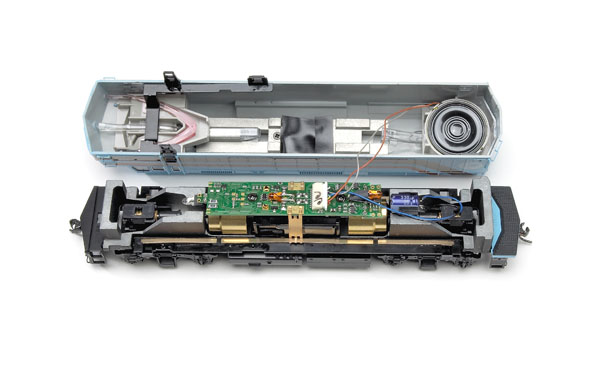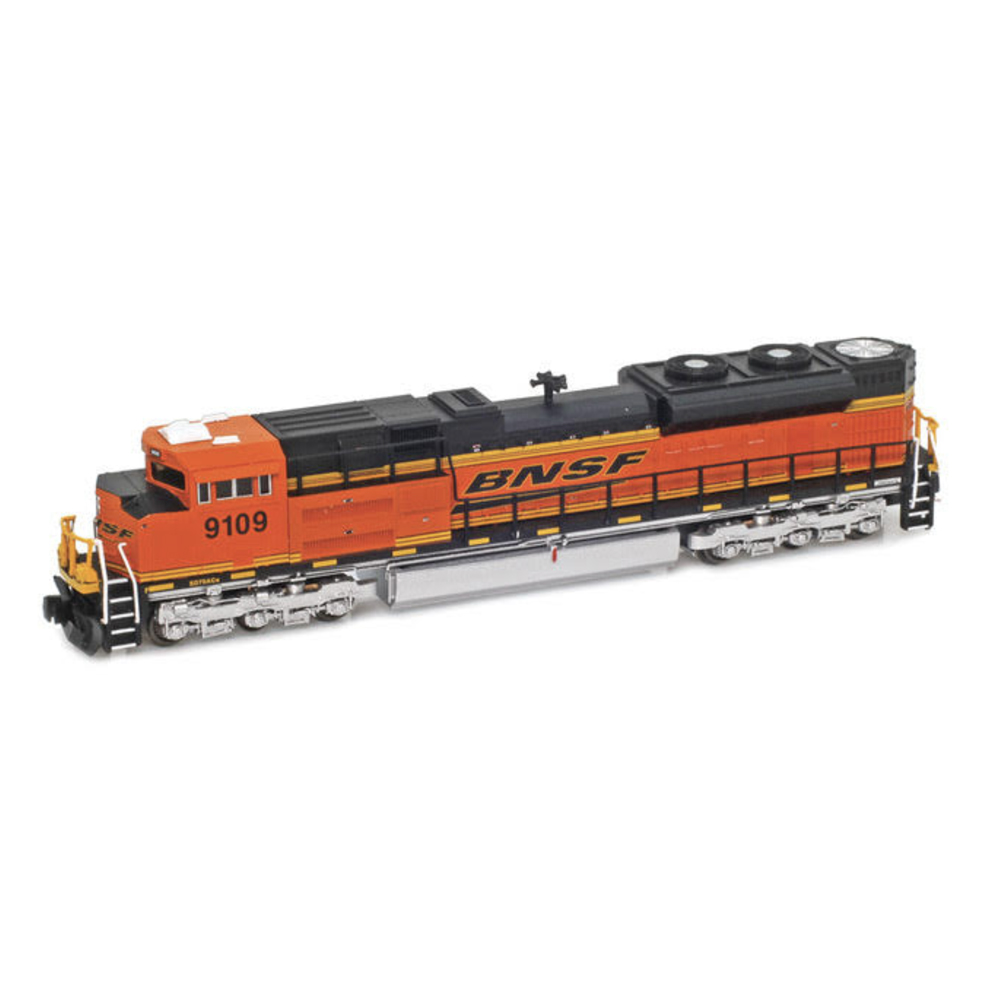Though Digitrax makes the conversion to DCC sound easy, you should be aware of several important things to help your installation be successful. First, use care when inserting the motor contacts into the decoder board. These parts need to fit tightly to work properly, but you must support the brass motor contacts when slipping them into the mounting holes. I gripped the contacts with a needle-nose pliers and then gently pressed the decoder circuit board onto the contacts one at a time.
The speaker installation is another area for caution. Don’t apply pressure to the paper cone when you press-fit the speaker into the enclosure. Fingers work best for setting the speaker, pressing only the outer metal ring.
One other point to consider is that the speaker and capacitor come from the factory wired to the decoder with a removable JST harness. This allows you to unplug the speaker from the decoder. However, the harness has five
extra wires that aren’t used for anything. To keep them out of the internal workings of the model, clip off the extra wires.
The Digitrax decoder provides prototypical F40PH sound quality. Using the semi-automatic notching feature (set configuration variable 155 to 1), I was able to get the locomotive to reproduce that head-end power scream (even when at rest), just like the F40PHs I remember from riding Chicago’s Metra commuter rail system in the 1980s.
The decoder’s only shortcoming is that you can’t ring the bell while the dynamic brake fans are running – I suspect it has to do with factory voice channel assignments. Still, the decoder has made running my F40PH a lot more realistic and fun.
Price: $79.98
Manufacturer
Digitrax
450 Cemetery Street
Norcross, GA 30071
Description: Digital Command Control sound decoder for
Kato F40PH locomotives
with speaker and
installation instructions














